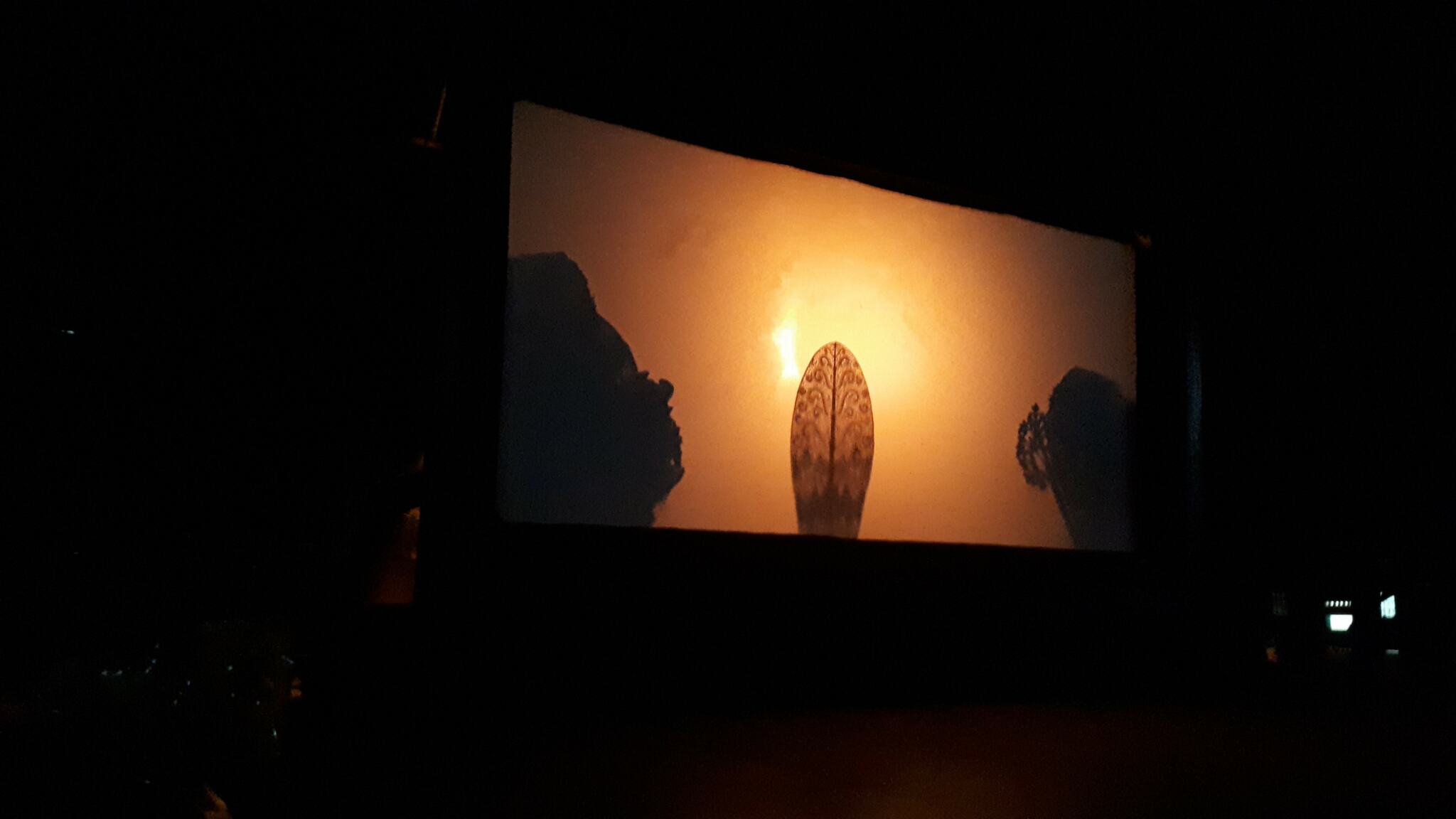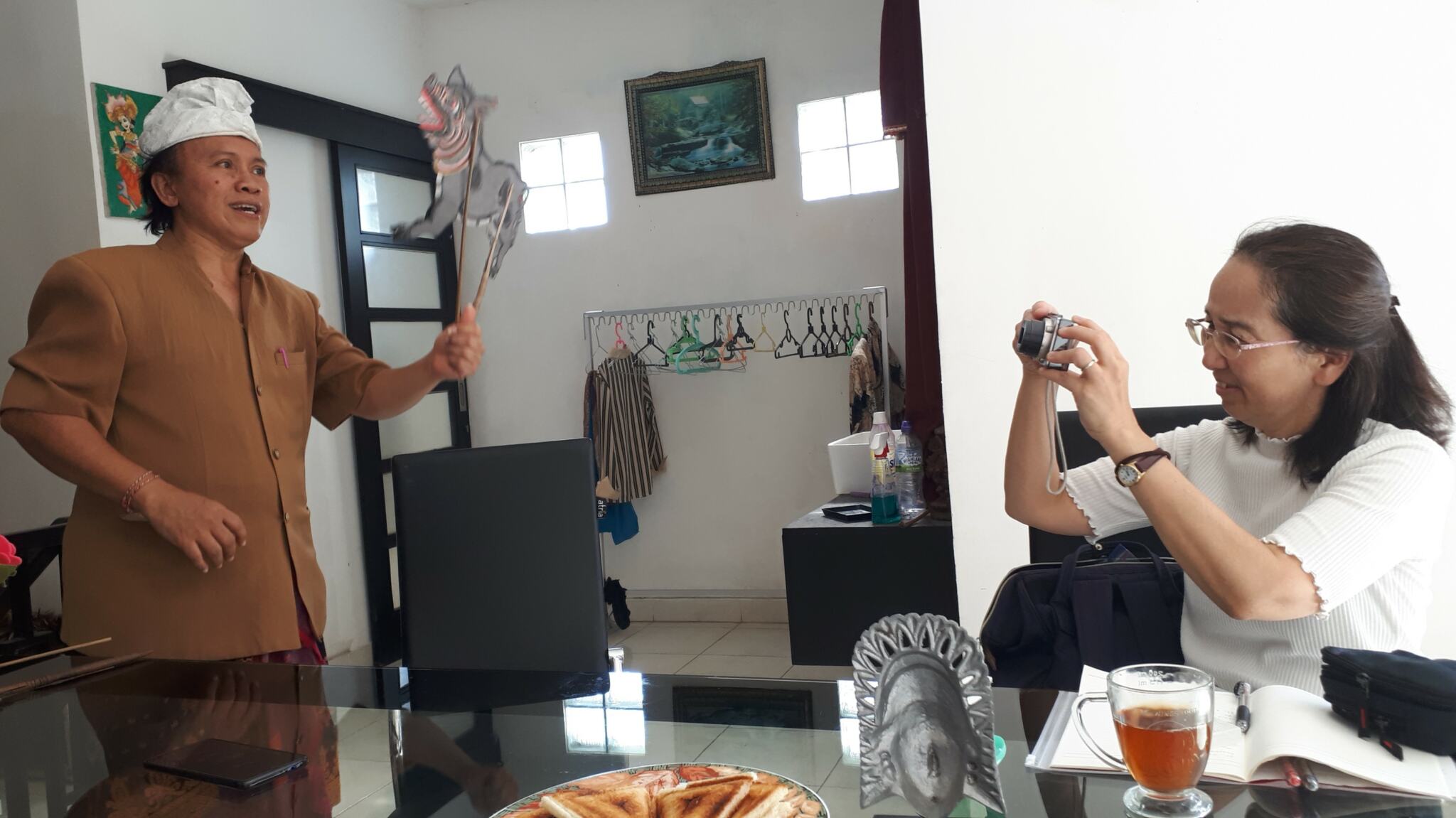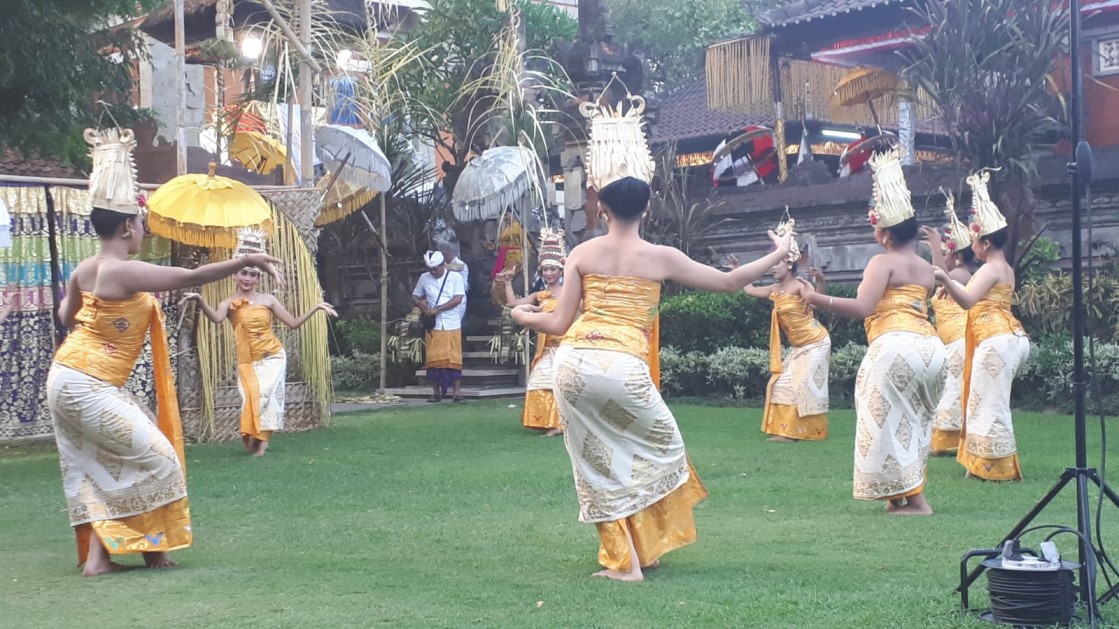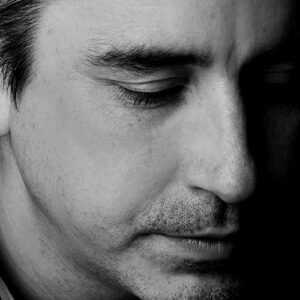
In 2014, I had the pleasure of participating in a cultural performing arts exchange in Bali as part of the East15 Acting School Directing MFA program. As a working director for many years prior to my MFA, to say that my time in Bali influenced my practice would be an understatement.
This fall, I was able to return to Bali to develop future collaborative pathways. My host for this trip was Wayang (shadow puppetry) puppeteer I Nyoman Sedana. I would also work with his students in a workshop exercise researching cross cultural exchange.
Professor I Nyoman Sedana is a noted Balinese Dalang (Master Shadow Puppeteer), the head of the Indonesian Society of Wayang Puppetry (PEPADI), and teaches at the Indonesian Institute of the Arts Denpasar (ISI Denpasar). Born to a traditional family of dancers in Gianyar he received his MA from Brown University & his PhD from Univ. of Georgia. He has taught Balinese arts across the US and UK. With his wife, Balinese dancer Ni Wayan Seniasih, he has toured productions across Europe, India, Thailand, Japan, and the US. He is a passionate ambassador for his culture and its arts with deep roots in the Balinese and Indonesian Performing Arts communities.

I couldn’t ask for a more generous or more knowledgeable host. Throughout my stay, he and his family shared insights into Balinese practices, introduced me to many of their peers, and guided me to temple ceremonies and cultural performances.
Due to a historical tragedy and a tremendous act of bravery by Balinese leadership in colonial times, the Balinese society was protected from the cultural repression commonly associated with European colonization. As a result, the performing arts practices such as Wayang Kulit reach back thousands of years.
For the Balinese, art is deeply connected to spiritual beliefs and socio-cultural practice. Balinese Hinduism is a complex fusion of Hinduism, Buddhism, ancestor worship and animalism. There is a theory that due to the favorable volcanic soil of the island for growing, Bali’s inhabitants were able to dedicate their time to spirituality and created a very rich culture of artistic practice and ceremonies.
Art is not a career or business, art is art, and is participated in by everyone from birth. In fact, there was no word for art in Balinese vocabulary until the 1930’s when it was identified by Europeans. Highly trained and skilled practitioners in dance, music, music drama, puppetry, and mask work alongside local artists and community members and it is difficult to find someone on the island who does not take part in the performing arts to some degree.
Although Wayang Kulit holds a special meaning, no art form or discipline is dominant the Balinese Performing Arts. All are part of a greater experience, often at events many contrasting disciplines occurring at the same time in the same space. Multi-lingual practice of Javanese, Balinese and contemporary Indonesia is common.

The word “Traditional” often used in referring to the Balinese practices is also a bit misleading. Although much of Balinese practice is performed at temple or ritual events, the forms shift and change with what is required in a contemporary world. And even in the more conservative approaches, there is space in the forms for contemporary content and commentary.
The god Siwa had cursed his wife, the goddess Parwati, to live as the demoness Durga at the Setra Gandamayu cemetery. Desperately lonely he was overpowered by desire for her and transformed himself into the demon Kala Ludraka. The union between these two demons unleashed evil spirits and a terrible pestilence into the world.
Faced with this threat, the triple gods Brahma, Wisnu and Iswara created Wayang Kulit. Through their performance, the demons Kala Ludraka and Durga were both reminded of their divine potential and became gods again. With their demonic spirits pacified, the pestilence vanished. Harmony, security and balance was restored.
From their very inception the arts were intended to create change. To remind us of what we could be.
Next: In search of Taksu: Creation & Community in the Balinese Performing Arts
Exploring Disability Arts: Theater HORA in Zurich
Rural Arts Festivals: Interview with Paint the Town (UK)


Jack (he, him) is an award-winning devisor, director, translator, and creative producer whose work and practice have taken him across Canada, Europe, the United Kingdom, and around the world. Projects have ranged from contemporary devising, multi-disciplinary, cross-cultural, and multi-lingual experiences to new works & texts, contemporary approaches to classical theatre and main stages. Shows under his direction have garnered over thirty theatre award nominations with many wins. He trained at leading international theatrical institutions including Circle in the Square (NYC, USA), GITIS The University of Performing Arts (Moscow, RU), ISI Indonesian Institute of the Arts (Bali, INA) and received his Masters in Fine Arts from the renown East 15 Acting School and University of Essex (London, UK).
Read Full Profile© 2021 TheatreArtLife. All rights reserved.

Thank you so much for reading, but you have now reached your free article limit for this month.
Our contributors are currently writing more articles for you to enjoy.
To keep reading, all you have to do is become a subscriber and then you can read unlimited articles anytime.
Your investment will help us continue to ignite connections across the globe in live entertainment and build this community for industry professionals.